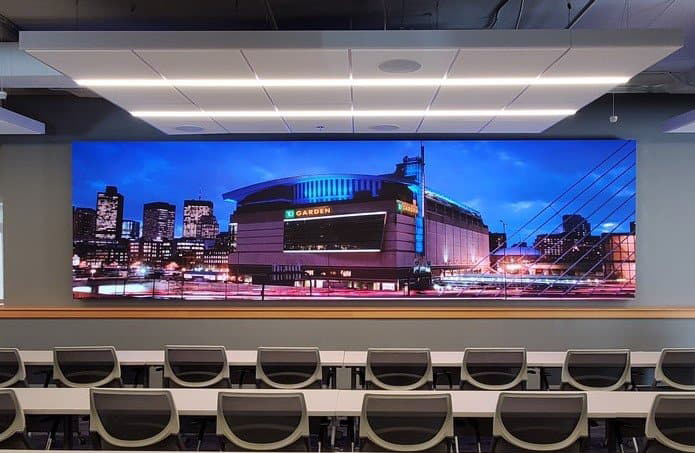
What should be paid attention to when using LED display screens in the studio?
With the development of LED display technology, LED display screens are increasingly used in TV studios and large-scale TV broadcasting activities. As an activity background wall, it provides a variety of vivid and dazzling background images and more interactive functions, making the background image dynamic and static, integrating the performance and the background, perfectly integrating the atmosphere of the scene and the program, and achieving functions and effects that are difficult to achieve with other stage art equipment. However, in order to give full play to the advantages of LED display screens , the following aspects should be paid attention to during the selection and use process.
1. The shooting distance should be appropriate.
The shooting distance is related to the dot pitch and fill factor of the LED display . The appropriate shooting distance is different for LED displays with different dot pitches and fill factors. Taking the LED display with a dot pitch of 4.25 mm and a fill factor of 60% as an example, the distance between the person being photographed and the screen is more appropriate at 4-10 meters, so that a better background picture can be obtained when shooting people. If the person is too close to the screen, when shooting close-ups, the background will appear grainy and it is easy to produce moire interference.
 2. The dot pitch should be as small as possible.
2. The dot pitch should be as small as possible.
The dot pitch is the distance between the center points of adjacent pixels on the LED display . The smaller the dot pitch, the more pixels per unit area, the higher the resolution, the closer the shooting distance can be, and of course the more expensive it is. At present, the dot pitch of the LED display used in the studio of domestic TV stations is mostly 1.5-2.5 mm. We must carefully study the relationship between the resolution and dot pitch of the signal source, strive to achieve consistent resolution, achieve point-to-point display, and thus achieve better display effects.
3. Color temperature adjustment.
When the studio uses a large LED screen as a background, its color temperature should be consistent with the color temperature of the studio lights in order to obtain accurate color reproduction during shooting. The studio lights sometimes use 3200K low color temperature lamps and sometimes use 5600K high color temperature lamps according to program requirements. The LED display needs to be adjusted to the corresponding color temperature to obtain satisfactory shooting effects.
 4. Ensure a good use environment.
4. Ensure a good use environment.
The life and stability of the LED large screen are closely related to the working temperature. If the actual working temperature exceeds the specified use range of the product, not only will its life be shortened, but the product itself will also be seriously damaged. In addition, the threat of dust cannot be ignored. Too much dust will reduce the thermal stability of the LED screen and even cause leakage, which may cause burning in severe cases. Dust will also absorb moisture, thereby corroding the electronic circuit and causing some short-circuit problems that are difficult to troubleshoot, so pay attention to keeping the studio clean.